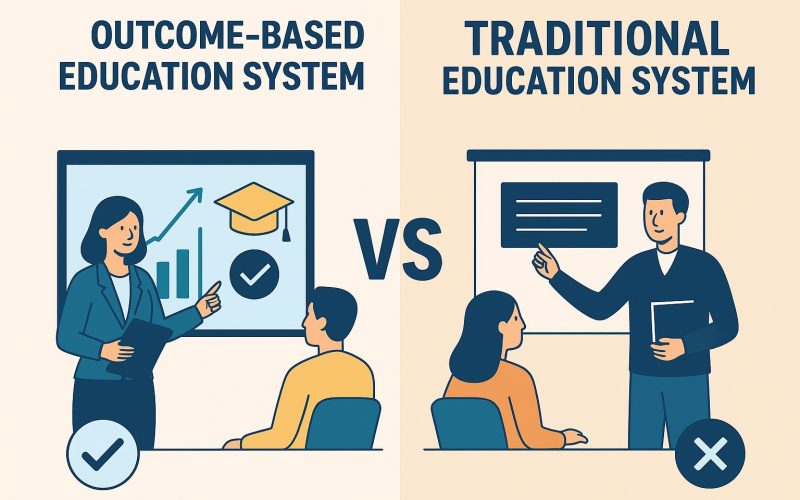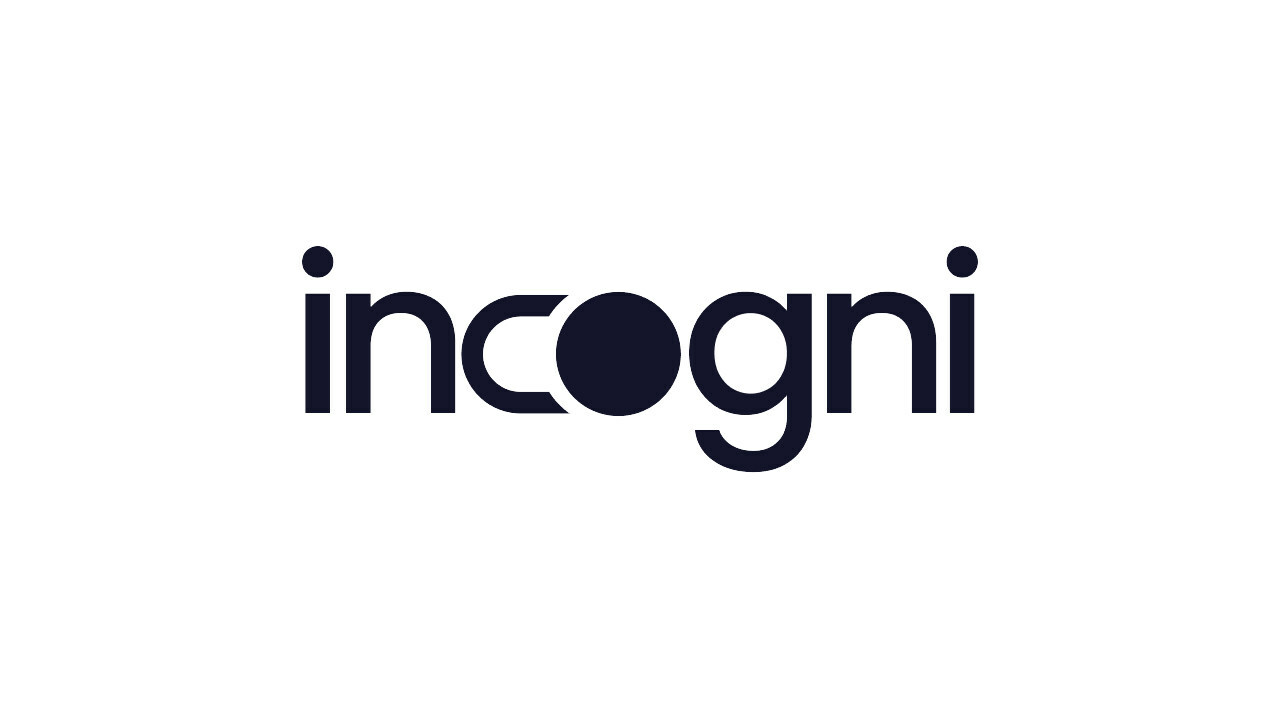Introduction
The education landscape has undergone massive transformation in the 21st century. While traditional education systems have long been the foundation of learning worldwide, the Outcome-Based Education (OBE) system is rapidly gaining ground as a modern, student-centered alternative.
Traditional education emphasizes inputs—such as teaching hours, syllabus coverage, and exams—while OBE focuses on outputs—what students actually learn, understand, and can apply in real-world situations.
This blog compares the Outcome-Based Education System vs Traditional Education System, highlighting their principles, differences, advantages, and relevance in today’s global learning environment.
What is the Traditional Education System?
The traditional education system is based on structured learning, where students attend classes, listen to lectures, take notes, and are assessed mainly through periodic examinations. The focus is largely on the teacher’s role in delivering information rather than the student’s ability to apply it.
Key characteristics of traditional education include:
- Fixed curriculum and rigid teaching methods
- Emphasis on memorization and rote learning
- Grades based on tests and attendance
- Uniform teaching pace, often leaving weaker students behind
- Limited flexibility to adapt to individual learning needs
While this system has been effective in producing graduates with foundational knowledge, critics argue that it does not fully prepare students for the dynamic job market and modern challenges.
What is Outcome-Based Education (OBE)?
Outcome-Based Education Software is a student-centered learning approach that shifts the focus from teaching inputs to learning outcomes. In OBE, the central question is: “What should students be able to do at the end of their education?”
Key characteristics of OBE include:
- Clearly defined learning outcomes at course/program levels
- Continuous assessment aligned with outcomes
- Flexible teaching methods tailored to student needs
- Emphasis on practical application, problem-solving, and critical thinking
- Data-driven progress tracking and improvement
OBE empowers students to take ownership of their learning, promotes innovation in teaching, and ensures graduates acquire job-ready competencies.
Core Differences: OBE vs Traditional Education
| Aspect | Traditional Education System | Outcome-Based Education System (OBE) |
| Focus | Teacher-centered (what is taught) | Student-centered (what is learned) |
| Learning Approach | Input-based (time, syllabus, lectures) | Output-based (skills, knowledge, outcomes) |
| Assessment | Periodic exams and grades | Continuous assessment, projects, real-world evaluation |
| Flexibility | One-size-fits-all approach | Flexible methods tailored to student needs |
| Skill Development | Emphasis on memorization and theory | Emphasis on application, problem-solving, critical thinking |
| Accountability | Focus on teaching hours, coverage | Focus on whether students achieve measurable outcomes |
| Accreditation Support | Limited role in accreditation | Directly supports NBA, NAAC, and global standards |
Advantages of the Traditional Education System
Despite its limitations, the traditional education system has strengths that cannot be ignored:
- Discipline and structure: Students follow a clear routine.
- Foundational knowledge: Strong base in theory and fundamentals.
- Familiarity: Teachers, parents, and students are accustomed to this system.
- Scalability: Easy to implement in large classrooms.
However, in today’s skill-driven economy, these benefits are no longer sufficient on their own.
Advantages of the OBE System
OBE addresses many of the shortcomings of traditional education. Its key benefits include:
- Student-Centric Learning: OBE allows flexibility in learning, encouraging students to take an active role through discussions, projects, and problem-solving.
- Clarity and Transparency: With clearly defined outcomes, students and educators know exactly what competencies need to be achieved.
- Industry Readiness: By focusing on practical applications, OBE ensures graduates have skills that employers demand—communication, teamwork, innovation, and adaptability.
- Continuous Improvement: Data-driven analytics identify learning gaps, helping institutions improve teaching methods and student support.
- Support for Accreditation: OBE aligns directly with NBA and NAAC requirements in India and global accreditation bodies, enhancing institutional credibility.
Real-World Example: Traditional vs OBE
Imagine two computer science graduates:
- Graduate A (Traditional Education): I attended lectures, memorized theory, and passed exams. However, I struggle to build an application from scratch in the workplace.
- Graduate B (OBE System): Completed projects, worked on problem-solving assignments, and learned outcomes like coding efficiency and teamwork. Enters the workforce ready to design and deploy applications effectively.
This example demonstrates how OBE bridges the gap between classroom learning and real-world application.
Challenges in Both Systems
Challenges in Traditional Education
- Lack of personalized learning
- Overemphasis on rote memorization
- Limited relevance to industry needs
- Students often graduate with theoretical knowledge but insufficient practical skills
Challenges in OBE
- Requires strong teacher training and curriculum redesign
- Heavy reliance on data and assessment systems
- Initial resistance from institutions and educators accustomed to traditional methods
- Technology integration is essential but not always accessible in all regions
Both systems face challenges, but OBE offers greater long-term adaptability to global education needs.
Why the Shift to OBE is Crucial in 2025 and Beyond
Global education is shifting toward competency-based learning because industries demand graduates who can think critically, solve problems, and adapt to new technologies. Governments and accreditation bodies are increasingly making OBE mandatory for higher education institutions.
For example, in India, the National Board of Accreditation (NBA) mandates OBE frameworks for engineering and technical programs. Similarly, global accreditation agencies emphasize measurable learning outcomes as proof of educational quality.
Thus, institutions that embrace OBE are better positioned to achieve academic excellence, attract international recognition, and prepare students for a rapidly evolving workforce.
Conclusion
The Traditional Education System has provided generations with a strong academic foundation, but in today’s fast-paced, skill-oriented world, its limitations are increasingly apparent. The Outcome-Based Education System, on the other hand, offers a flexible, student-centered, and data-driven approach that prepares learners for real-world success.
While transitioning to OBE may require investment, training, and cultural change, the benefits far outweigh the challenges. For institutions, OBE is not just about compliance—it’s about delivering quality education, fostering innovation, and empowering students to thrive in a global knowledge economy.
As we move further into 2025, the debate is less about whether to adopt OBE and more about how quickly institutions can implement it to stay competitive and relevant.
FAQs: OBE vs Traditional Education
Q1. What is the main difference between OBE and traditional education?
Traditional education focuses on teaching inputs, while OBE focuses on measurable student outcomes.
Q2. Which is better for career readiness?
OBE is better suited for preparing students with practical skills and industry-ready competencies.
Q3. Can traditional and OBE systems be blended?
Yes, many institutions adopt a hybrid model, combining the structure of traditional education with the flexibility of OBE.
Q4. Why is OBE important for accreditation?
Accreditation bodies like NBA and NAAC require measurable learning outcomes, which OBE directly supports.
Q5. Is OBE suitable for all disciplines?
Yes, OBE can be applied across technical, professional, and even liberal arts programs, with outcomes defined accordingly.










